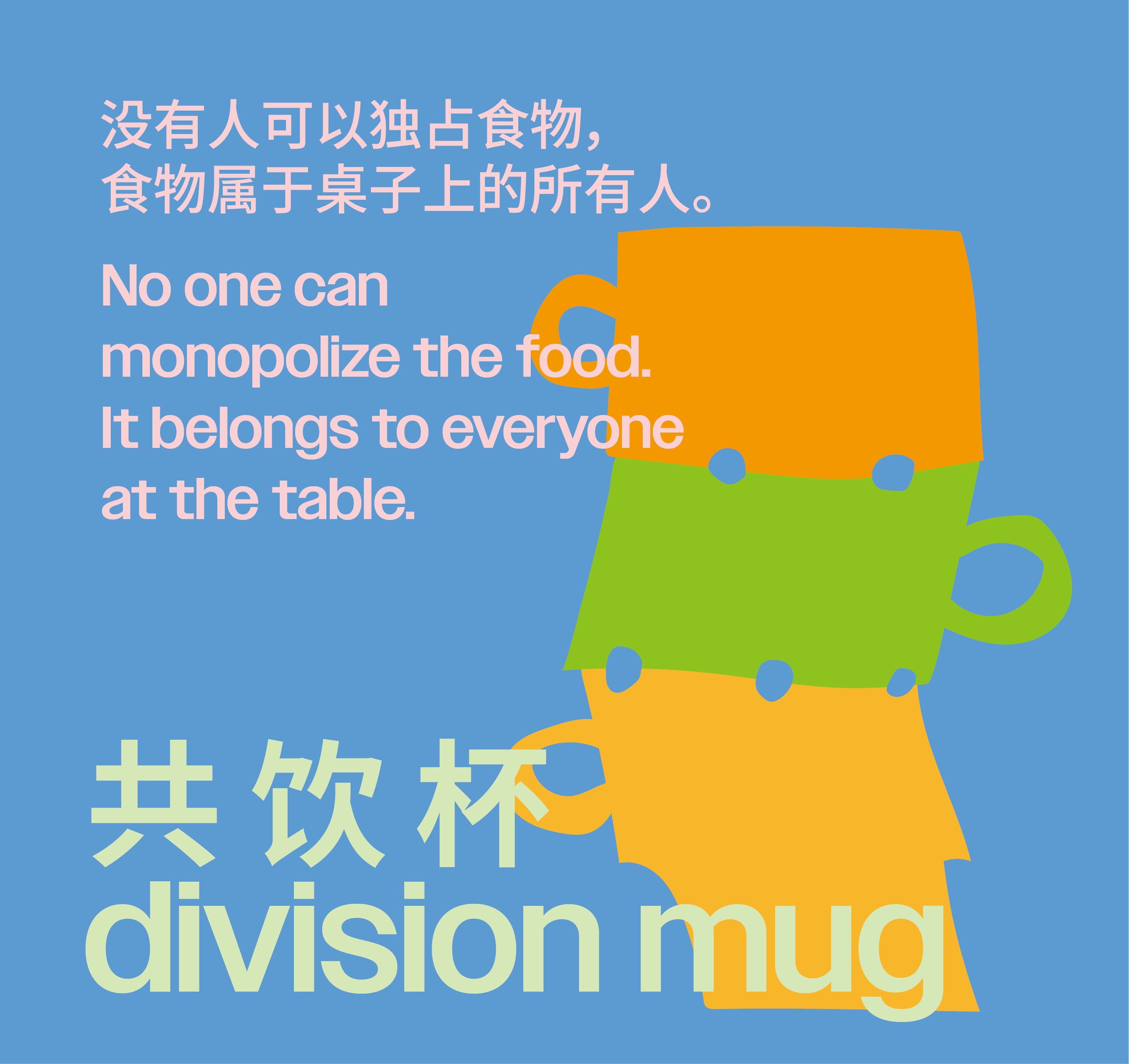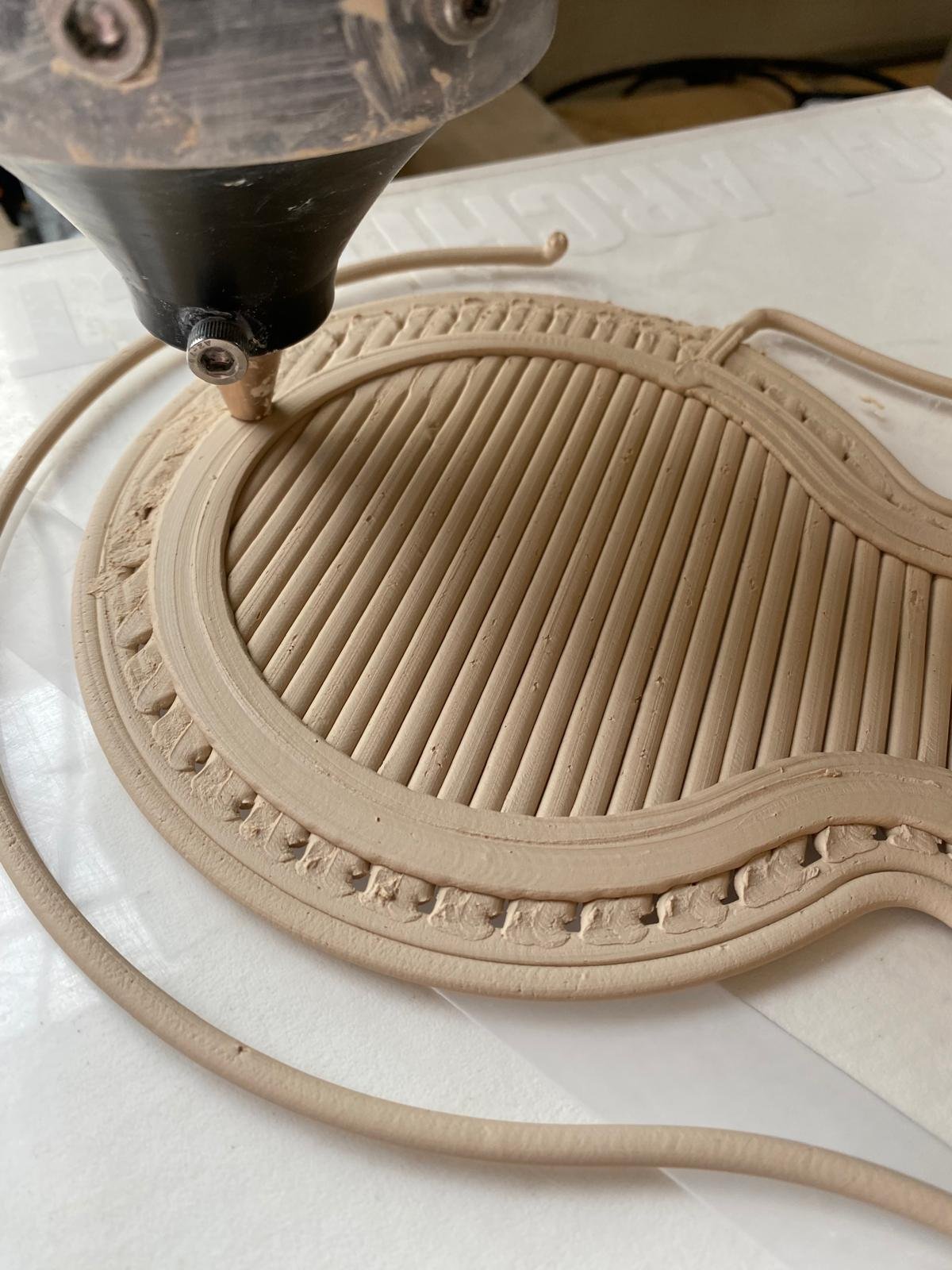
The dining table
Speculative Design / Design Fiction / Prototyping
As part of my ongoing design research, I developed a matriarchal design Method.
In this project, I created three artifacts to envision a matriarchal future. In this speculative scenario, the kitchen and dining space emerge as the central hub of society, transforming daily meals into intentional rituals of connection and learning. People gather not only to eat, but to share knowledge, foster relationships, and cultivate a collective sense of belonging.
2024 Spring
Matriarchal Design Philosophy:
Focus on building relationships
Non-coercive design language
Prioritize interaction over efficiency
How I Practice Matriarchal Design Philosophy
1. Focus on Building Relationships
Each artifact is designed to foster human connection. By subtly altering familiar forms, I invite users to experience how small changes in everyday objects can transform daily life. These designs challenge the norms of functionality and demonstrate the power of viewing objects through a matriarchal lens.
2. Non-Coercive Design Language
The artifacts encourage open interpretation. While I express my intentions through form, I leave space for personal meaning. The design becomes a conversation between creator and user—guiding, but never dictating. Here, the designer steps back, allowing users to define their own experiences.
3. Prioritize Interaction Over Efficiency
Efficiency is not the goal. These artifacts intentionally slow down daily tasks, creating opportunities for deeper interaction. I also chose handmade, time-intensive materials over industrialized options, further emphasizing connection, craftsmanship, and intentional living.
Artifacts 1
Duo Plate
Mom says that when joy is shared, it doubles.
When we eat, we are very close to each other. This closeness is physical: at first, we might try to keep our distance, even though it's not possible, but gradually we don't mind our arms always touching. Physical closeness often leads to spiritual closeness: we start whispering secrets that others can't hear, but I don't share the same secrets with everyone. You know, everyone is different, so I share different secrets with them!
Eating with a stranger for the first time is always the hardest. But from what I've observed, among two people, there's always one who will take the initiative to move closer, and then they start talking, starting with the simplest things: "Do you think this meal is tasty?" They smile at each other. Even so, there are many who will not eat together again. This has happened to me too, but don't feel sad about it, as the number of family members one can have in a lifetime is very limited.
For those familiar, eating together couldn't be more normal. The time waiting for the other to eat is never wasted because it gives me a chance to finish what I'm saying. Then it's the other person's turn to speak. In the end, what always happens is that we try to have each other have the last bite.






Artifacts 2
Connected Knife
Relationships carry their risk. Believe in each other.
You expose your vulnerable flesh under another's sharp blade, or you hold your knife close to another's body. This is the duality of relationships.
I hold the knife with both hands, each hand grasping one side. I make sure that the knife I hold will not slip from my grasp. Because I am approaching another pair of hands, not my own, but hers. I am more cautious than when I use my own hands, because I know the harm I cause will fall upon her. These hands are under my knife because of trust in me, trust that is so easily lost and so hard to regain. I hold the knife, its sharp edge facing her, my actions will determine the course of this relationship. I know I cannot choose to cause harm.
I press down on the item under her knife, a carrot is dangerous, and so are apples and lettuce. No vegetable is safe. Some are hard, some are slippery, some complex and fragile. Each has its flaws. The only thing reliable is her care for me. I trust that she will see where my hands are before she cuts. We communicate: "I'm ready," I often tell her. "I'm going to cut," she tells me.
Familiarity makes actions easier, and our relationship grows closer as I frequently entrust myself to her, fully believing she will treat my trust with seriousness. And she does; we have never hurt each other. Initially, her cuts were always at a distance from my hands. I also kept my hands further from her knife, both of us maintaining a respectful distance. But gradually, her knife and my hands grew closer. Several times, her cold blade rested on my warm fingers, grazing my knuckles as she sliced. This brought me joy. We looked at each other's hands as if they were our own. Verbal communication was no longer necessary. I followed the motion of her raising the knife, placed my hand, and then she would cut at just the right moment. Different ingredients require different rhythms. Round ones quicker, leafy ones broader. We became one person.
Can harm occur? Yes, it can.
It's inevitable, so I don't blame her. I know it's not intentional, and I know she feels even worse about it than I do. Harm and friction don't always erode trust; sometimes, they actually strengthen our trust in each other.






Artifacts 3
Division Mug
No one should monopolize a portion of food.
Stacking cups together signifies that I want to drink from the same cup as you.
When stacking cups, remember to look into each other’s eyes. Even if you know she won’t refuse, getting consent is an act of love. Because sometimes she might refuse: you can’t drink this because it has alcohol.
Remember to explain why you are refusing. It’s not to make excuses for yourself, but to let the other person understand your thoughts, why you are doing something? Because you know letting the other person guess your thoughts shows no love.
Misunderstandings are very painful. Because once a misunderstanding occurs, explaining it afterwards is much harder than when it happens.
So, before you stack the cups, remember to look into each other’s eyes.
But this doesn’t mean that the juice belongs to her.
This juice belongs to us, and this cup belongs to us too. Stacking one on top of the other means we are about to share what’s left of this drink. But it is still yours.
No one has their own cup. Having a personal item feels strange and unnecessary. All utensils are shared within the family, and chores are a collective responsibility. Thus, everyone using one cup becomes a strange notion—a single cup is enough for one type of drink.















